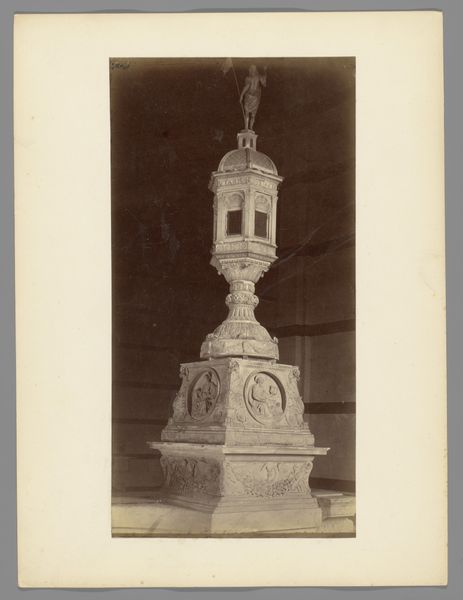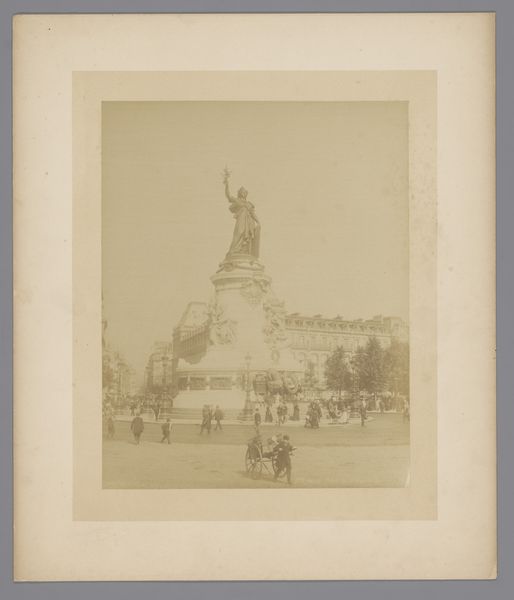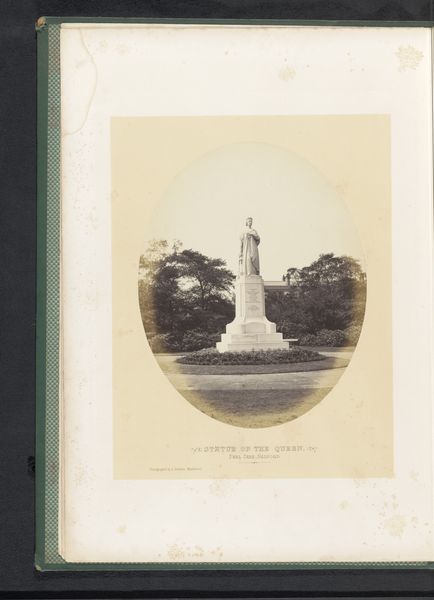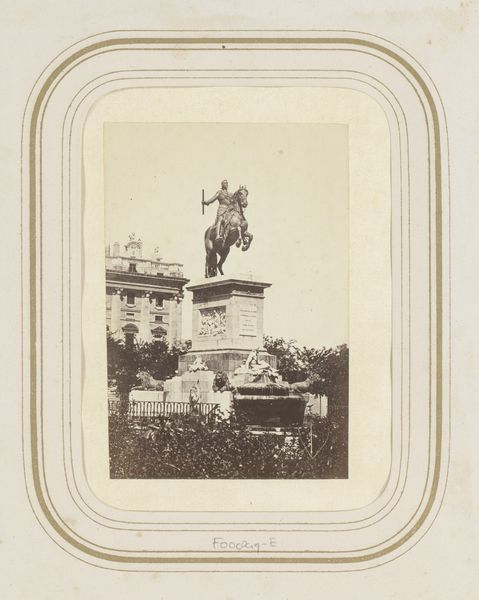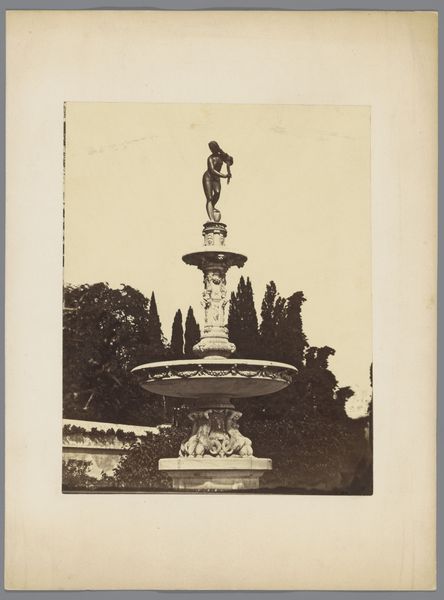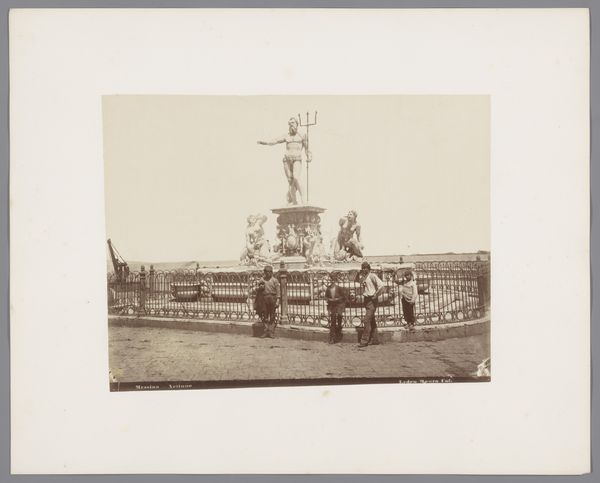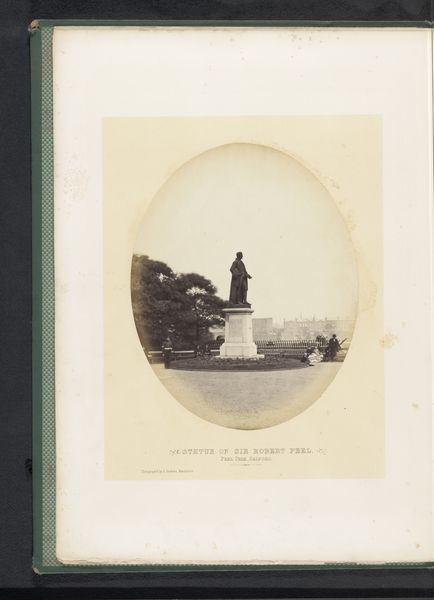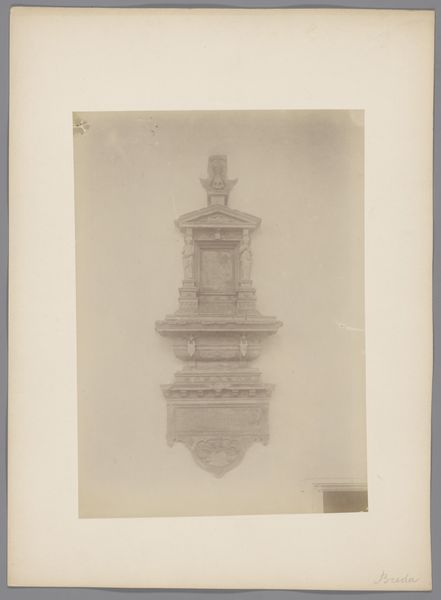
Standbeeld De Maagd van Holland alias Kaat Mossel op de Nieuwe Markt te Rotterdam c. 1880 - 1900
0:00
0:00
photography, sculpture
#
statue
#
landscape
#
photography
#
sculpture
#
realism
Dimensions: height 184 mm, width 109 mm
Copyright: Rijks Museum: Open Domain
Editor: So, here we have an anonymous photograph, circa 1880-1900, from the Rijksmuseum collection. It's titled "Statue De Maagd van Holland alias Kaat Mossel op de Nieuwe Markt te Rotterdam," capturing a sculpture in a public square. I'm struck by the formality, and even a sense of Dutch pride, but I'm wondering, what resonates most with you when you look at this image? Curator: What immediately strikes me is the complex intersection of nationalism, gender, and class embodied in this "Maagd van Holland," or Maid of Holland, and specifically linked to 'Kaat Mossel'. 'Kaat Mossel' was a nickname referring to a fishmonger figure who represented the pro-Orangist, thus, the more popular, faction during the late 18th-century Patriot Revolution. Do you see the political undercurrent here? Editor: Yes, I think I see it. It’s more than just a representation of Dutch pride; it's a loaded symbol referencing a very specific, and clearly still relevant, political divide. So, the sculpture commemorates a figure linked to popular support and a particular political alignment. Curator: Precisely! This image is documenting the persistence of historical power dynamics expressed through public sculpture. What does it mean to represent national identity through a figure like Kaat Mossel? Who is included, and more importantly, who is excluded from this vision of "Holland?" What social classes or groups might feel alienated or misrepresented by this symbol? Editor: I hadn't thought about it that way – who is left out of this story? This image is making me think about how public art can solidify certain narratives while silencing others. Curator: Exactly. This is a photograph *of* a sculpture that already *is* a document, layered with meaning and reflective of ongoing struggles. Recognizing these layers opens up crucial conversations about who gets to shape historical memory and whose voices are amplified in the public sphere. Editor: Wow, that really gives me a lot to consider about how we engage with public monuments and their underlying social messages. Curator: It makes you realize how every image is embedded in a context, always saying more than it appears at first glance.
Comments
No comments
Be the first to comment and join the conversation on the ultimate creative platform.
